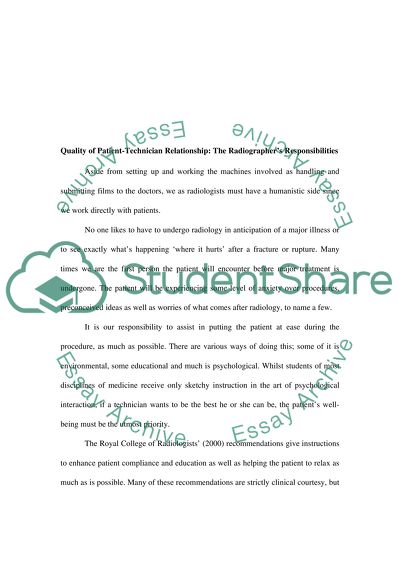Cite this document
(“Putting the radiography patient at ease Essay Example | Topics and Well Written Essays - 2000 words”, n.d.)
Putting the radiography patient at ease Essay Example | Topics and Well Written Essays - 2000 words. Retrieved from https://studentshare.org/health-sciences-medicine/1530079-putting-the-radiography-patient-at-ease
Putting the radiography patient at ease Essay Example | Topics and Well Written Essays - 2000 words. Retrieved from https://studentshare.org/health-sciences-medicine/1530079-putting-the-radiography-patient-at-ease
(Putting the Radiography Patient at Ease Essay Example | Topics and Well Written Essays - 2000 Words)
Putting the Radiography Patient at Ease Essay Example | Topics and Well Written Essays - 2000 Words. https://studentshare.org/health-sciences-medicine/1530079-putting-the-radiography-patient-at-ease.
Putting the Radiography Patient at Ease Essay Example | Topics and Well Written Essays - 2000 Words. https://studentshare.org/health-sciences-medicine/1530079-putting-the-radiography-patient-at-ease.
“Putting the Radiography Patient at Ease Essay Example | Topics and Well Written Essays - 2000 Words”, n.d. https://studentshare.org/health-sciences-medicine/1530079-putting-the-radiography-patient-at-ease.


